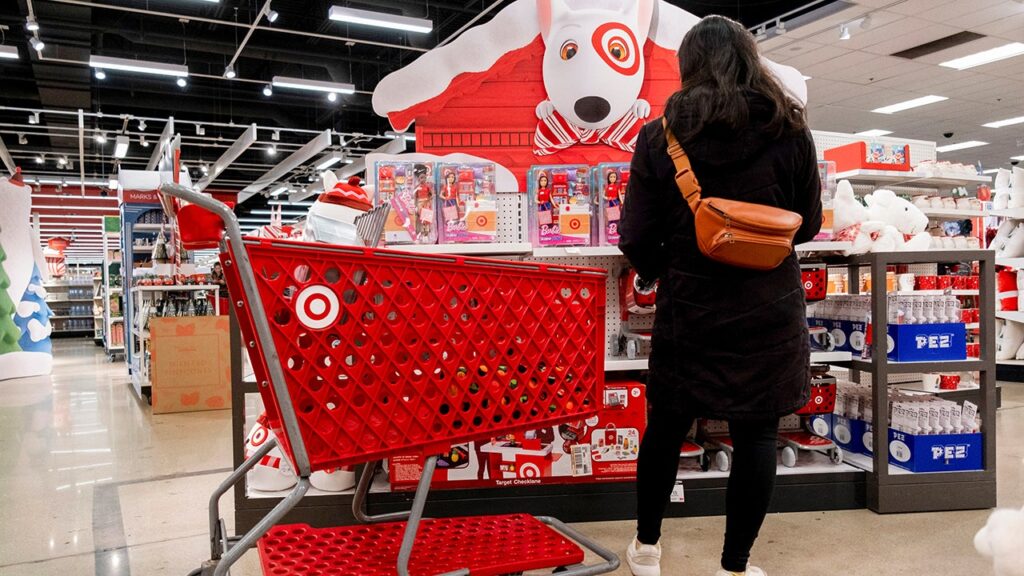In recent months, Target Corporation (TGT) has found itself grappling with two significant challenges that have put pressure on its sales and brand image. As the retail giant faces a noteworthy backlash from customers concerning its rollback of diversity, equity, and inclusion (DEI) programs, it is also contending with the adverse impacts of rising tariffs on imported goods.
Understanding the Sales Decline
During the first quarter of the fiscal year, Target reported a disappointing revenue drop of 2.8% when compared to the same quarter last year, with net sales declining to $23.8 billion. This statistic fell below Wall Street’s expectations, which projected $24.32 billion. One of the most alarming indicators was the 3.8% drop in same-store sales, mirroring a lack of consumer confidence and spending power due to external economic pressures.
According to CEO Brian Cornell, several key factors contributed to this downturn in sales, which included declining consumer confidence, heightened tariff fears, and the backlash against their DEI policy changes. Target’s struggles are exacerbated by broader trends within the retail industry, potentially leading to long-term challenges unless the company adapts swiftly.
The Impact of Tariffs
Target’s financial woes have intensified due to President Donald Trump’s tariffs on imported goods, particularly from China. With about 50% of its merchandise sourced from overseas, including 25% specifically from China, Target finds itself vulnerable to increased costs. Analysts have warned that these tariffs might either force the retailer to absorb costs and erode profits or pass the increased expenses onto consumers in the form of higher prices.
“We are navigating a highly challenging environment,” Cornell stated in a recent earnings call. To mitigate the impact of these tariffs, Target is exploring alternatives like diversifying its supplier base and optimizing product pricing, reserving price hikes for last resort scenarios.
Backlash Over DEI Policy Changes
In addition to the financial pressure from tariffs, Target has faced a significant consumer backlash due to its recent changes to DEI initiatives. Following its announcement in January of this year to scale back its DEI strategies, including eliminating hiring goals for minority employees and ending broad participation in equality assessments, the company faced a 40-day boycott led by prominent figures and advocacy groups.
The protests have been particularly potent due to Target’s previous reputation as a leader in diversity efforts. Once celebrated for its commitments to racial justice and LGBTQ rights, the company’s recent policy pivots have drawn ire, resulting in many consumers reconsidering their loyalty and spending habits within Target stores.
“Target has experienced an unprecedented challenge with customers who feel they’ve been betrayed by a company they supported for advocacy in DEI initiatives,” said a spokesperson for Black Wall Street Ticker, an advocacy group that has played a key role in the protests.
The Response and Future Outlook
Faced with these consecutive challenges, Target has initiated a multi-year growth plan known as the Enterprise Acceleration Office, aimed at streamlining operational agility and enhancing long-term profitability. This initiative seeks to create a responsive corporate structure that can adapt to ongoing market pressures.
Despite these efforts, the company has revised its sales forecasts, anticipating a low-single digit decline for the fiscal year, down from modest growth estimates. Industry insiders suggest that unless significant changes occur in consumer sentiment and operational strategies, Target could continue to struggle in a competitive retail environment.
Comparing with Competitors
When comparing Target’s performance with competitors like Walmart and Costco, the contrasts are stark. While Walmart recently reported a surprising 4.5% increase in same-store sales, Target’s decline indicates a shaky foothold amid changing consumer preferences. On the contrary, Costco’s affirmations of support for DEI policies have led to a 7% uptick in its foot traffic.
“Walmart’s approach to DEI, combined with their strong promotional strategies, has helped them hold customer loyalty better than Target during these turbulent times,” noted industry analyst Steven Shemesh.
Conclusion
In the current retail landscape, Target’s dual crises of declining sales due to economic factors and backlash over DEI rollbacks reflect fundamental shifts in consumer priorities. As the company implements strategic changes to reclaim consumer confidence and navigate tariff pressures, the decisions made in the coming months will be crucial for Target’s stabilization and growth prospects. It remains critical for the retailer to respond effectively to both operational challenges and consumer sentiment to emerge successfully in a competitive retail environment.

